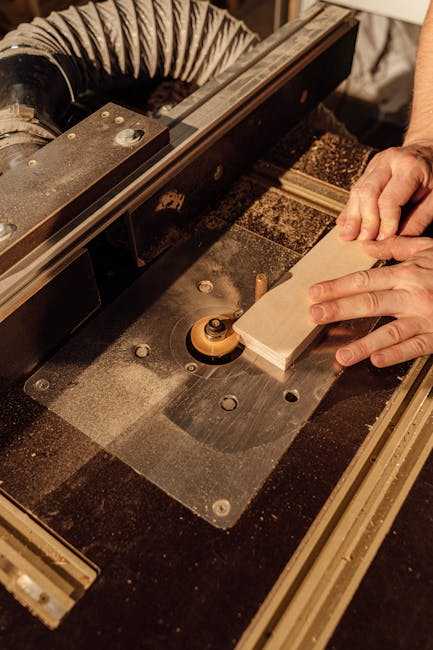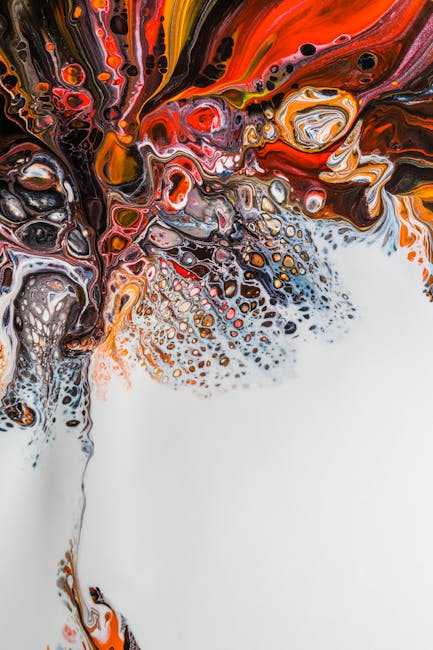Table of Contents
- Exploring the Art of Dotted Painting Techniques
- Choosing the Right Tools for Dotted Painting Success
- Creating Eye-Catching Designs with Dot Art
- Dotted Painting Tips for Beginners and Experts Alike
- Q&A
- The Conclusion
Exploring the Art of Dotted Painting Techniques
The mesmerizing world of dotted techniques invites artists and hobbyists alike to explore a realm of intricate patterns and vivid expressions. This approach, characterized by its use of small, deliberate dots to create images, dances between abstraction and realism. It has seen a surge in popularity across various cultures, from traditional Aboriginal art to contemporary designs, each bringing its own unique flair to the canvas.
- Textural Delights: Through the clever use of color gradation and dot size, artists can evoke a sense of depth and texture that captivates onlookers.
- Spatial Variance: Alternating between dense collections of dots and sparse areas can mimic movement and capture light play.
- Cultural Narratives: In many indigenous artworks, dotting serves as a storytelling tool, offering insights into cultural histories and personal journeys.
The materials and techniques used can significantly influence the final piece. Artists typically choose from a variety of tools, such as brushes, dotting tools, and applicators, to achieve precise placements. Paint composition also plays a crucial role; acrylics, oils, and even watercolors bring diverse textures and vibrancy to dotted creations.
| Tool | Use |
|---|---|
| Dotting Tool | For uniform dots |
| Brush | Varied dot sizes |
| Toothpick | Fine details |
Engaging with dotted painting not only unleashes creativity but also encourages mindfulness. As artists focus on the repetitive action of dotting, they often find themselves entering a meditative state, where the worries of the outside world fade. This process, both expressive and introspective, offers a tranquil escape, allowing one’s imagination and emotions to flow freely across the canvas.


Choosing the Right Tools for Dotted Painting Success
Mastering the art of dotted painting requires the right set of tools to bring vibrancy and precision to your artwork. As an artist, it’s essential to understand how different tools can affect the detail and finish of your work. One of the most crucial components in your toolkit is the dotting tools themselves, which come in varying sizes to accommodate different artistic needs. Many artists opt for silicone or acrylic dotting tools for their reliability and ease of use. These tools not only provide consistent dots but are also easy to clean, ensuring longevity and repeated use.
In addition to dotting tools, your choice of paintbrush matters significantly. Look for fine-tipped brushes if you prefer creating intricate designs or adding delicate details to your drawings. The flexibility and control offered by high-quality brushes can enhance the smoothness and precision of your dots, making your overall creation more aesthetically pleasing. Remember, the better the quality of the brush, the more refined your results will be.
- Acrylic Paints – Known for their thick texture, making them ideal for bold, bright dots.
- Oil Paints – Provide a glossy finish, adding a professional touch to your artwork.
- Water-based Paints – Easier to clean up, suitable for beginners or quick practice sessions.
Another critical element to consider is the surface on which you’ll paint. Different surfaces can lead to significant variations in your artwork’s appearance. Canvas boards and wood panels are popular choices among artists for their smooth, sturdy form, allowing for better dot adherence. If you prefer a smoother surface that reacts well with both paints and tools, opt for masonite or primed canvases. These materials not only maintain the vibrancy of your colors but also keep the paint from spreading, preserving the sharpness of your dots.
| Tool Type | Pros | Cons |
|---|---|---|
| Silicone Tools | Easy to clean, durable | May lack in size variety |
| Acrylic Tools | Consistent sizes, affordable | Can wear with frequent use |
| Fine-tipped Brushes | Precision, flexibility | Requires regular maintenance |


Creating Eye-Catching Designs with Dot Art
Dotted painting, an art form that celebrates intricate patterns, vibrant colors, and meticulous application, brings new life to surfaces ranging from canvas to home decor. The essence of this technique lies in its unique ability to pair complexity with simplicity. By varying dot sizes and color combinations, you can create mesmerizing designs that demand attention while inviting closer examination. The result is a fusion of traditional artistry and modern aesthetics, perfect for those who wish to explore both structured and freeform expressions.
To embark on your dot art journey, start by choosing your tools. Essential items include acrylic paints, dotting tools or brushes, and a palette to mix custom colors. Paints should be thick enough to hold shape while allowing smooth application. Here are some tips to help choose your materials:
- Tools: Experiment with various implements such as needles, toothpicks, and specialized styluses to achieve different dot sizes.
- Surface: Ideal backgrounds include rocks, fabric, wooden panels, or primed canvases.
- Paint: Select contrasting or complementary colors to enhance your design’s vibrancy.
Mastering the technique involves understanding dot placement and patterning. You can create anything from simple, linear designs to complex, swirling mandalas. Consistent spacing and size variation make the difference between an amateurish look and a professional finish. Practicing on scrap material is invaluable for testing color mixes and honing your skills. Given creativity and patience, even beginners can craft stunning pieces that exhibit both spontaneity and precision.
Incorporating dot painting into various projects can transform ordinary items into extraordinary works of art. Consider applying designs to personalize everyday objects or to craft bespoke gifts. The table below outlines a few creative applications alongside required materials:
| Project | Materials |
|---|---|
| Decorative Rocks | Rocks, Acrylic Paint, Sealant |
| Customized T-Shirts | Fabric Paint, Cotton Tee, Brushes |
| Wall Art Panels | Wood Panel, Paint, Varnish |


Dotted Painting Tips for Beginners and Experts Alike
Embarking on the journey of mastering this unique form of art can be both exhilarating and rewarding. For beginners, defining a clear workspace is essential. Ensure you have access to all your tools, such as dotting tools, acrylic paints, and canvas or paper. Remember that patience is crucial. Start with simple patterns and gradually increase complexity as you gain confidence. Try practicing on paper before moving to your final canvas to get comfortable with the technique and rhythm of dotting.
For those who are experienced and seeking to refine their skills, experiment with layering dots to add depth and dimension to your art. Utilize a variety of dot sizes and color gradients to introduce a dynamic range into your pieces. Incorporate other elements such as metallic paints or glitters to enhance certain areas of your composition. This will not only elevate the visual interest but also challenge your planning and precision as you design intricate layers.
- Beginners: Focus on basic shapes and consistent spacing.
- Experts: Experiment with asymmetrical designs and visual storytelling.
- All: Ensure tools are cleaned thoroughly between color changes to prevent unintentional color blending.
Understanding the psychology behind color choices can greatly influence the mood and reception of your art. Choose colors based on the emotions you wish to convey; warmer tones often evoke energy and passion, while cooler hues can suggest calmness and introspection. By blending theoretical knowledge with practical application, artists can create pieces that are not only visually compelling but also emotionally resonant.
| Item | Purpose |
|---|---|
| Dotting Tools | Creating consistent and varied dot sizes |
| Acrylic Paints | Providing vibrant and durable color |
| Canvas | Offering a stable surface for detailed work |
Regardless of your skill level, practice remains the key to mastering dotted painting. Allocate dedicated time to sketch designs and plan your color palettes meticulously. Engage with communities, share your art, and seek constructive feedback to continue growing. The pleasurable blend of precision and creativity will not only enhance your skills but also offer a meditative escape in the world of art.
